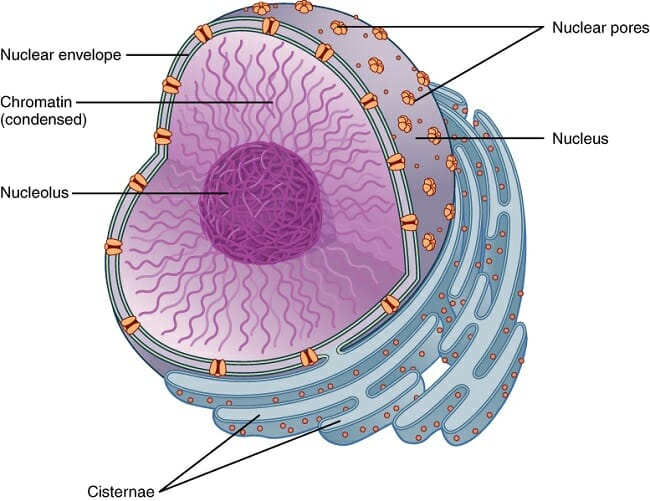Class 10 - Science
Chapter 16 - Management of Natural Resources

Top Block 1
Question : 1. What changes can you make in your habits to become more environment-friendly?
Answer :
We should use the formula of three R’s in our home in order to be environment friendly.
1. Reduce, i.e. to use less, and save the water and the electricity by stopping their wastage.
2. Recycle, i.e. to segregate the waste so that materials which can be recycled should be dumped in a place for recycling.
3. Reuse, i.e. to reuse certain materials like bottles Of jams and pickles for storing other kitchen items, etc.
Question : 2. What would be the advantages of exploiting resources with short-term aims?
Answer :
There would be no advantage of exploiting resources with short-term aims. Their exploitation may appear to be advantageous in the short-term but it is highly disadvantageous in the long- term. By doing so, we may be able to enjoy the comforts Of life but we would damage our environment gradually.
Question : 3. How would these advantages differ from the advantages of using a long-term perspective in managing our resources?
Answer :
The exploitation of natural resources with short-term aims are advantageous for present generation to meet their daily requirements whereas management of natural resources with long-term perspective are aimed to fulfill the needs of future generation and to maintain their sustainability.
Question : 4. Why do you think there should be equitable distribution of resources? What forces would be working against an equitable distribution of our resources?
Answer :
Everybody has equal rights over natural resources and also everybody should get the benefits from them. Therefore, equitable distribution of resources is essential to ensure that everybody gets their due benefit. But many forces go against the equitable distribution of natural resources. The geographical factors are the most important factors which do not allow equitable distribution of natural resources. Economy is another factor which prevents equitable distribution Of these resources.
Page 273
Question : 1. Why should we conserve forests and wildlife?
Answer :
We should conserve forests and wildlife for preserving our environment. They together maintain an ecological balance Of nature. We should conserve them for our economic and social growth and to meet our material aspirations.
Question : 2. Suggest some approaches towards the conservation of forests.
Answer :
The principles of three R’s should be followed to conserve the forests. In addition to this, all stakeholders should be made a part of any conservation programmes. Also, the interests of local forest dwellers should always be kept in mind while Organising a conservation programme.
Multiple Choice Questions
Question : 1. Manu and Dheergoes to same school, but their parents drop and pick them separately. After learning about natural resources and their management, they talked to their parents, who arrived on few decisions. What could be the best possible decisions among those given below.
(a) To walk the small distance to school
(b) Car pool
(c) Use common school bus at nearby stop
(d) All of the above
Answer :
(d) To save the resources like petrol and diesel used in cars, one can walk to their destination, if it is close, car pooling can be done by people sharing same locations, etc. These practice will save the natural resources and reduce environmental pollution.
Question : 2. The pH of water sample collected from a river .was found to be acidic in the range of 3.5 – 4.5. On the banks of the river were several factories that were discharging effluents into the river. The effluents of which one of the following factories is most likely to cause low pH of river water? [NCERT Exemplar]
(a) Soap and detergent factory
(b) Lead battery manufacturing factory
(c) Plastic cup manufacturing factory
(d) Alcohol distillery
Answer :
(b) Lead is a major constituent of lead-acid battery used extensively in car batteries. The discharge from lead battery manufacturing factory can lower the pH of river water by making it acidic.
Question : 3. Varun has read about some national movements associated with conserving environment and its resources. Chipko movement was one tree hugging movement in which the villagers compelled axemen to stop the cutting of trees by embracing and encircling trees. Help him in finding out the person who was not related with this movement?
(a) RajenderaSingh
(b) Gaura Devi
(c) Sunder Lai Bahuguna
(d) Chandi Prasad Bhatt
Answer :
(a) Rajendra Singh was not associated with the Chipko movement. Chipko movement was meant for protection of trees from excessive commercial exploitation and was instigated by Sunder Lai Bahuguna and Chandi Prasad Bhatt.
Question : 4. Due to several human activities, waterbodies are polluted resulting in decreased availability of usable water. Maya was testing the samples of polluted water in lab. The presence of which factor will confirm to her that the water sample is polluted.
Select the correct option.
(a) The presence of coliform bacteria
(b) High BOD
(c) Both (a) and (b)
(d) Either (a) or (b)
Answer :
(c) In polluted water sample, coliform bacteria are present. Biochemical Oxygen Demand is BOD. High BOD indicates that water is polluted.
Coliform bacteria occurs in waterbodies where human excreta and deadbodies are disposed off.
Mddle block 1
Question : 5. The construction of large dams has faced a lot of oppositions like the SardarSarovar Project on river Narmada lead to Narmada BachaoAndolan. Raj has to identify the correct problem that lead to such strong oppositions against construction of such dams.
Choose the correct option.
(a) Large areas of agricultural land and human habitation submerged
(b) Destruction of large ecosystem and loss of biological diversity
(c) Displacement of large number of local population without adequate rehabilitation
(d) All of the above
Answer :
(d) All the given statements are correct. Construction of large dams leads to disappearance of agricultural land, disposal of human habitation.
Thus, disturbing an ecosystem along with its diversity. People are displaced from their homes ” without any recommendation of living space and profession.
Question : 6. Ganga has been considered as a symbol of purity but is grossly polluted by waste dumped in it. Government has been making plans to revive this basin. Which steps should according to you be incorporated in the plan to prevent any further polluting of this river? Choose the correct option.
(a) Renovation of sewage pumps and treatment plants
(b) Extension of sewerage in unsewered areas to bring waste from those areas to treatment plants
(c) Installation of new treatment plants
(d) All of the above
Answer :
(d) All the strategies can be incorporated in the plan of action to make river Ganga pollution free.
Question : 7. Madhur was reading about rainwater harvesting and its benefits. He came to learn about different types of structures that are build in different states to conserve rainwater. Select the correct option which represent such structures.
(a) Bhundhis
(b) Khadins
(c) Both (a) and (b)
(d) Compost pit
Answer :
(c) Khadins and Bhundhis are the traditional rain harvesting systems used in Rajasthan and Madhya Pradesh, Uttar Pradesh, respectively.
Question : 8. A student reading an article on sustainable development came across some statements which confused him. Those statements are being given below.
Choose the incorrect statement from therm by selecting an option.
(a) Economic development is linked to environmental conservation
(b) Sustainable development encourages development for current generation and conservation of resources for future generations
(c) Sustainable development does not consider the view points of stakeholders
(d) Sustainable development is a long planned and persistent development
Answer :
(c) Statement (c) is incorrect because sustainable development do consider the interest of stakeholders, i.e. people with dependency on the natural resources and are affected by any project or its outcome directly or indirectly.
Question : 9. A programme called “silviculture” was started to replenish the forest resource, so as to meet the diverse needs of living beings. According to you, which statements from those given below will not be considered an advantage of this initiative.
(a) It maintains a perfect water cycle in nature
(b) It prevents soil erosion.
(c) It encourages plantation of multipurpose trees in open lands of urban area
(d) It produces a large quantity of raw materials for industry
Answer :
(c) Silviculture encourages plantation of multipurpose trees in open lands of urban area is not advantageous because they can be cut down when necessity for more land crops up is required.
Question : 10. Many international treaties and protocols have been developed and signed by different countries to reduce production of greenhouse gases and environment pollution. A treaty/protocol to reduce CO2 emission was
(a) Montreal protocol (1987)
(b) Kyoto protocol (1997)
(c) Helesinki declaration (1989)
(d) None of the above
Answer :
(b) The Kyoto protocol was signed by various countries pledging to regulate the emissions of CO2. India signed this protocol in Aug. 2002 and has reduced its CO2 emission by 5.2% till now.


